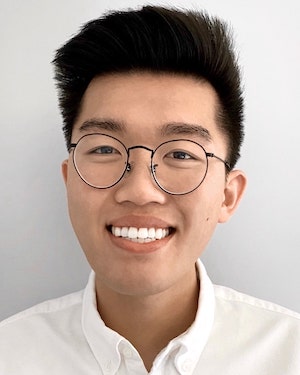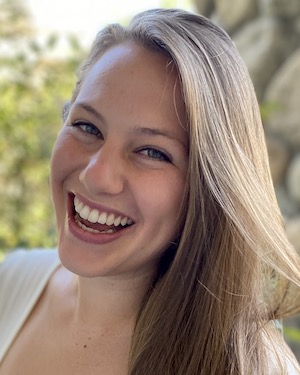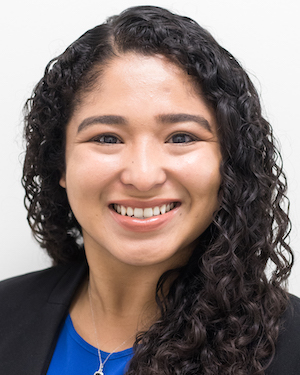Student Blog
Classes

A Day in the Life (Zoom Edition) ⟩
June 26, 2020, by Calvin
Classes Videos
Calvin is inviting you to a scheduled Zoom meeting.
Join Zoom Meeting
Meeting ID: Calvin’s Corner
Connecting . . .
Hey everyone! Today, I’ll be unmuting and starting my video to show you all a day in my life as a USC Chan Occupational Therapy Student (Zoom Edition)! In this vlog, I invite you into my typical Tuesday where you can see what courses I’ve been taking, what student organizations I’ve been participating in, and so much more. I was actually inspired by our division’s very own Student Vlogger, Caroline Kim, when she posted a day in the life video on the USC Chan YouTube Channel! You can go check out her video here!
I hope that this gives you a good glimpse into my Zoom life and what the program is like right now. Hopefully, I can continue finding the time to make more videos for the “Calvin’s Corner” series, but for now, please enjoy!
⋯

An A+ Doesn’t Define You ⟩
June 25, 2020, by Savi
Classes
As a current student earning an Entry-Level Master’s Degree, many people find it easy to assume things about me before getting to know me. These may include that I am very smart, that I love to study, that school is easy for me, and that I am a master of maintaining an appropriate work-life balance. I understand why these are common assumptions since I decided to voluntarily enroll in at least six more years of school after graduating from high school. Although I appreciate that these assumptions are positive, I continuously feel an immense amount of pressure to live up to them every day. Whether that be by taking two extra hours to study instead of sleep, reading over an article more than once to ensure that I have not missed anything for a class discussion, or over-committing myself to various research and other academic pursuits, I make sure that I fulfill the expectations I feel society has placed on me as a graduate student. I spent all of high school and college continuously pushing myself to get the best grades possible and to take on a variety of leadership roles and extracurricular pursuits while acting as though I was never overwhelmed. I convinced myself that being perfect was the only way I could achieve my dream of getting into USC’s occupational therapy master’s program. Now I made it . . . phew! I got into my dream program, and I am pursuing a career that I am extremely passionate about.
You would think that I would allow myself to take a deep breath and relax right? Unfortunately, that was not the case. As I entered into my first summer I hit the ground running. I spent all day and night studying to make sure that I would maintain good grades. I was tired. I had graduated from college a few days before moving to LA to start at USC, and I pretended like I was not exhausted every day. Everyone around me seemed so driven, smart, accomplished, and motivated. I told myself that everyone was an “A+” student and that I had to be one too. As the summer semester ended and the official school year began, I was worried that my energy had depleted so much that I would not be able to make it through the semester. This was the first time I had to ask myself if I had made a mistake choosing to pursue this career. Was I cut out to be an OT? Was I smart enough? Would I fall behind my peers? Could I keep up with the curriculum?
These doubts overwhelmed me until I confided in a professor for advice. In this meeting, I was taught some of the most important lessons that have helped me not only get through but also enjoy my first year of OT school. Here is what I have learned:
- You have been admitted into this program for a reason. You worked hard to get here, and you deserve to be here. A team of skilled OTs decided that you were well equipped to become an amazing OT, so remind yourself that you deserve to be here with everyone else.
- Your skills speak volumes and your grades do not. The wonderful grades you received in your undergraduate career allowed you to be admitted to this program but now you must focus on the learning process, not the end result. You are here to learn and harness the skills to become a great OT.
- You are going to be a graduate of the top occupational therapy educational program in the country, according to the U.S. News & World Report, and you will become a licensed OT after you pass the NBCOT exam. The deciding factor for whether you will get hired over another candidate is your ability to be personable, your experience in the field, and the skills you are equipped with. Focus on what you can learn in the field, from your peers, from your faculty, and from your mentors. These will be your colleagues for life so spend more time learning from them than focusing on getting the perfect letter grade.
- It is OK to not get an A. It is engrained in you that grades are what measure your level of success since it is a big part of what got you to where you are today. You made it here, so now you can breathe and just focus on passing and learning all that you can.
- Have fun because this is the first time you have the chance to immerse yourself in classes focused on your passion! You are surrounded by people that share the same enthusiasm for OT as you so appreciate this unique and special opportunity.
So friends and colleagues . . . it’s OK to not be perfect. Continue to remind yourself that you deserve to be here. Getting a perfect letter grade will not make or break your career so breathe and enjoy the ride. This is a once in a lifetime opportunity. YOU made it.
⋯

A Semester Like No Other ⟩
May 31, 2020, by Lamoni
Classes Life Hacks
As we all know, COVID-19 has changed a lot of things. That includes our program. It was quite a surprise for us all when we left for spring break and were told that we would not be returning. Everything happened so quickly. A friend from home was supposed to visit but decided to cancel their flight one day before their arrival. A few days later, I received an email that encouraged everyone to leave campus. That same night, my dad told me that I needed to come home and a flight was booked for the next day. While that was a whirlwind, I packed up all of my things with the belief that I would return next month. Most of my belongings, including my car, stayed in Los Angeles while I headed home.
Slowly, reality sunk in and USC announced that we were moving to remote learning. That meant that instead of taking the shuttle to campus, I would be taking all of my classes in my room. The joy and laughter that I once shared with my classmates would now be contained behind a computer screen. Rather quickly, within the first week of online classes, my eyes felt strained and my back started to hurt. I wasn’t prepared to take classes this way. I also began having trouble staying organized. Something about walking to another classroom helped me to sort my courses and organize my thoughts. Changing Zoom links didn’t do that for me. My research moved online too. So did the student organizations that I am a part of. Then, celebrations like birthday parties were online as well. It was a strange feeling because, though I no longer had to commute anywhere, I felt like I was just barely keeping up. On top of that, I now live in a different time zone and have to constantly remind myself that the meeting scheduled for 5PM is actually 7:00.
We’ve now started our full semester of remote learning — a complete load of five courses online for an entire 11 weeks! But I will not be taken off guard this time; I have prepped. Here are some things that are working for me: I have finally begun using Google Calendar (I have no idea how I’ve gone without it). Google Calendar allows me to use multiple time zones. For me, that means that it shows my schedule in both Pacific Time and Central Time. Additionally, it syncs with my computer’s calendar which syncs to my phone which syncs to my watch. And, just in case digital reminders aren’t enough, I also have a whiteboard calendar and a planner. In times like this, you have to cover all grounds. For seating, I have a designated small pillow for my lower back. For my eyes, I have blue light glasses. For energy, I keep a jar of trail mix on my desk. My watch also gives me reminders to stand and I use those reminders for stretch breaks. During class breaks or lunch break, I try to take a step outside to breathe in some fresh air. When classes are over for the day, instead of delving into homework or assignments right away, I give my eyes another break. Typically, I will either read for pleasure or exercise in my backyard.
This semester is different, therefore it requires a lot of adaptations and modifications. But, we’re OTs. We got this!
⋯

Courses at Chan: What Makes Each Trojan OT Unique ⟩
May 5, 2020, by Japeth
Classes Videos
One thing I really love about the Post-Professional Master of Arts in OT program at USC Chan is the liberty that we have as students to learn what we are really interested in. The program takes a year to complete and consists of two semesters: the Fall semester includes the core courses (these are the courses that you take together with the entire cohort) and the Spring semester includes two core courses and elective courses (these courses are specialty courses and students take what they are passionate about).
This spring semester, I decided to take the following courses: OT 560 Contemporary Issues in School-Based Practice, OT 583 Lifestyle Redesign, OT 565 Sensory Integration Interventions, and OT 568 Sensory Processing and Sensory Integration: Special Topics.
OT 565 and OT 568: I want to take this chance to say thank you to Dr. Janet Gunter and Dr. Joan Surfus for being amazing! The Sensory Integration Theory is not an easy theory to learn, and it even gets more difficult when you start learning how to use it during assessment and intervention, but these two professors made sure that we learn every concept and encouraged us to ask questions when we were quite confused. They give us coursework that are practical and useful and are very helpful in making us integrate theory into practice.
OT 560: Dr. Linsey Smith is a great teacher for me. Each module was equipped with up to date information about OT in the school setting, evidence-based interventions, and standardized assessments! I love how the course is properly organized according to the grade level from Early Intervention to High School transition, and it also included contents about interprofessional collaboration, professionalism management, and advocacy!
OT 583: Another “only at USC” course and also one of the best at Chan is the Lifestyle Redesign® elective. This course taught me how to manage myself as a person and as an OT, how to manage individual and group sessions that are very client-centered, and how to establish routines and habits through behavior change. This course is very empowering, and I appreciate how Dr. Camille Dieterle allows us to do return demonstrations during class.
(Disclaimer: You can take 10-12 units of elective courses, and mine is more than that because as a student, we are also allowed to overload.)
And finally, I am sharing this video project that USC Chan’s Post-Professional Master’s in OT 2020 created! We hope that this will be a useful resource to future students!
⋯

A Day in the Life of Zoom University ⟩
April 13, 2020, by Marilyn
Classes Life Hacks Videos
Throughout my undergraduate and graduate career, I avoided taking online classes for the simple fact that I enjoy interacting with peers and professors in a classroom setting. Due to the unprecedented circumstances with the COVID-19 pandemic, I have been receiving questions from prospective and newly admitted students about how I have been navigating the change to online class instruction. I share in this video strategies that I have incorporated into my home environment to support my online learning. I also discuss how I engage in mental health check-ins to assess how I am doing with the various transitions I am navigating as a student — both professionally and personally. We can get through this together and do not forget to FIGHT ON!
⋯





